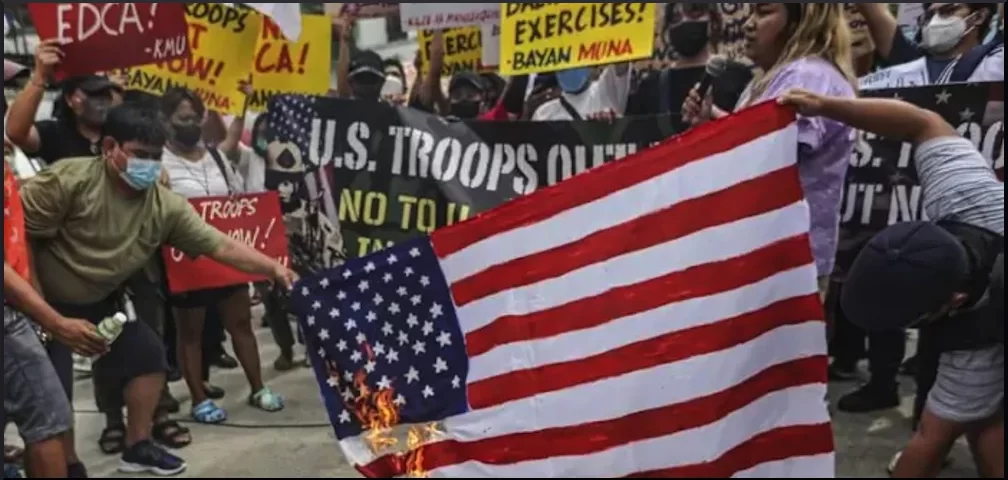by Jeremy Kuzmarov, published on CovertAction Magazine, May 2, 2023
Filipinos Don’t Want to Be Used as a “Footstool for American Power Projection and Provocation” Says Filipino Peace Activist
This past month, more than 3,000 U.S. and Filipino soldiers participated in a three-week live-fire military exercise called Balikatan, which included a drill to blow up a mock Chinese warship in the South China Sea.
The exercises coincided with the U.S. Navy’s sailing a guided-missile destroyer, the USS Milius, within 12 miles of Mischief Reef in the Spratly Islands near the Philippines, over which China claims sovereignty.
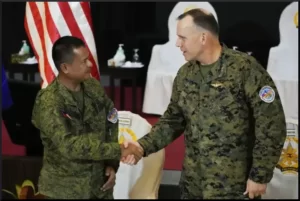
Defense Secretary Lloyd Austin announced on a visit to the Philippines in February that the U.S. will provide $100 million to refurbish at least nine Philippines military bases the U.S. now has access to. Four new naval bases were set to be established close to contested waters in the South China Sea—three of them north of Luzon Island directly facing Taiwan.
The growing U.S. military presence in the Philippines has infuriated China, which sees the guns pointed at them.
Marcos Jr. is allowing American forces to establish military staging grounds and surveillance outposts in the northern Philippines across the sea from the Taiwan Strait and in western Philippine provinces facing the disputed South China Sea, which Beijing claims virtually in its entirety on historical grounds.
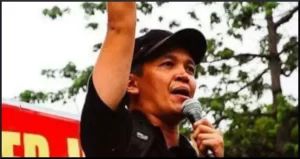
The Empire Returns
Walden Bello is a former vice presidential candidate and academic who was arrested by Marcos Jr. under fraudulent pretexts shortly after Marcos Jr. took power last summer.
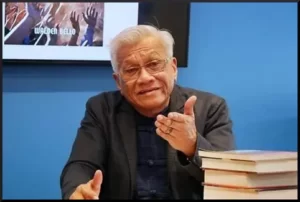
When the U.S. annexed the Philippines at the end of the 19th century, it was mainly because of the opportunity provided for “projecting American naval power onto the vast Asian land mass.”
The military bases Washington established became the most visible evidence of a continued U.S. presence after the Philippines became nominally independent in 1946.
When a left-wing movement emerged known as the Huks that challenged U.S. hegemony, it was violently suppressed with the aid of Edward Lansdale and the CIA, which helped to empower Ramon Magsaysay, a Western media darling praised for his alleged liberal reformist and democratic tendencies.
In reality, Magsaysay was what William Pomeroy, an American Communist who took up arms for the Huks, called “a Huk killer” and one of the “most perfect puppets who ever danced on a U.S. string.” The latter was because of his eager backing of Ngo Dinh Diem in South Vietnam, allowance for an expansion of U.S. military bases, and adoption of economic policies that catered to U.S. business interests, who donated $250,000 to his presidential campaign.[2]
The defeat of the Huks paved the way for the ascendancy of Ferdinand Marcos, Sr., another “perfect U.S. puppet,” who continued to lend support for U.S. criminal aggression in Vietnam, while ordering secret military operations to seize Chinese territory in the contested Spratly Island waters and crushing the Filipino left.
According to Bello, a key reason for Marcos Jr.’s kowtowing to U.S. interests is that he faces a standing $353 million contempt order related to a U.S. court judgment awarding financial compensation from the Marcos estate to victims of human rights violations under Ferdinand Sr.’s dictatorship, which lasted from 1965 to 1986.
Marcos has avoided complying with the contempt order issued by the U.S. District Court in Hawaii in 2011, which renders him vulnerable to arrest any time he visits the U.S. during his presidential term.
Bello writes that “Marcos also cannot be unaware of how the U.S., with its global clout, has often been able to freeze the assets of people linked to regimes it considers undesirable…the Marcos family has $5 billion to $10 billion in landholdings and other assets distributed throughout the world…Being on the wrong side of the United States, especially in a dispute as central as the U.S.-China conflict, could have devastating financial consequences for the Marcos family. With this veritable sword of Damocles hanging over him, Marcos is not someone who would dare cross Washington.”[3]
Obama’s “Pivot” to Asia Sets the Groundwork
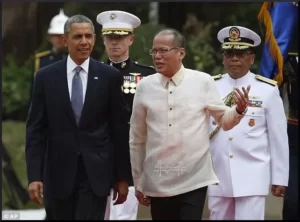
This was a huge military build-up symbolically introduced by Hillary Clinton in November 2011 on a U.S. naval destroyer in Manila Bay, the location of America’s original “pivot” in the 1898 Spanish-American Philippines War.
The carefully choreographed event with Clinton implied a proud continuity from an era most historians consider to be shameful, as U.S. soldiers killed at least 200,000 Filipinos in “America’s First Vietnam.”
In 2014, Obama forged an agreement with Filipino President Benigno Aquino III as an important part of the “pivot” granting U.S. troops access to four strategic air and military bases—a reversal of the U.S. military withdrawal from the Philippines following the end of the Cold War.[4]
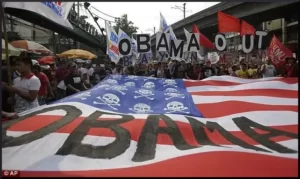
A provision reminiscent of China under British neo-colonial rule in the 19th century established that U.S. forces and contractors in the country would not be subject to Philippine law, having extraterritorial immunity from local jurisdiction.
Filipino are only allowed access to U.S. bases in the country after they have obtained permission from U.S. forces. Limits on the number of U.S. bases, weaponry or troops that the U.S. could have in the country were further removed.
U.S. Military Activities in High Tempo
The U.S. military build-up in the Philippines fits a continent-wide pattern.
In early April, the U.S. Pacific Command reported on the deployment of a bomber task force mission of four B-52 bombers to Guam, where the Pentagon was focused on building up military bases to help the U.S. military “counter China.”
On April 3, the U.S., Japan and South Korea began a combined anti-submarine exercise, involving the USS Nimitz aircraft carrier strike group, along with four South Korean destroyers and a Japanese destroyer. The combined operations included anti-submarine warfare exercises, search and rescue drills, and staff embarkations, according to a. U.S. Navy news release.

Separately, the USS Makin Island Amphibious Ready Group wrapped up its participation in Exercise Ssang Yong 2023 in South Korea on April 4. That exercise involved 28,000 Korean and U.S. sailors and Marines, 30 warships, 70 aircraft and 50 amphibious assault vehicles.
The Biden administration meanwhile agreed to provide a third Coast guard vessel to Vietnam in an attempt to consolidate an anti-China alliance with it, and is building a state-of-the-art new embassy in Hanoi where memory of the Vietnam War has apparently begun to fade.
Asia Arms for War
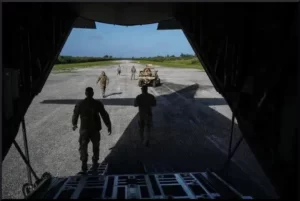
On the tiny island of Tinian, the launching point for American planes carrying atomic bombs to Hiroshima and Nagasaki in 1945, a new runway was being carved from the jungle, just south of World War II ruins inked with mildew, as American airmen refueled Japanese fighter jets during a military exercise using more airstrips, islands, and Japanese planes.
Japan, after decades of pacifism, recently announced a doubling of its military budget and was gaining offensive capabilities unmatched since the 1940s with U.S. Tomahawk missiles.
Cave reported that “India has [recently] conducted training with Japan and Vietnam. Malaysia is buying South Korean combat aircraft. American officials are trying to amass a giant weapons stockpile in Taiwan to make it a bristling “porcupine” that could head off a Chinese invasion, and the Philippines is planning for expanded runways and ports to host its largest American military presence in decades.”
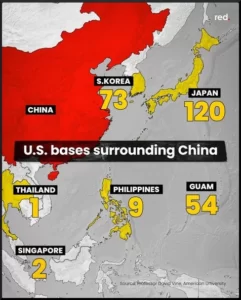
According to Cave, “Mr. Xi [Chinese Premier Xi Jinping] has made his intentions clear. He aims to achieve a ‘national rejuvenation’ that would include displacing the United States as the dominant rule-setter in the region, controlling access to the South China Sea, and bringing Taiwan—a self-governing island that China sees as lost territory—under Beijing’s control.”
These statements display a chauvinistic assumption—dominant in the U.S. ruling class—that the U.S. has the right to be the “rule-setter” in a region thousands of miles from its shores in which China was the traditional hegemon.
And a right to control a sea with China and not America in its name.
Cave’s assessment about Taiwan is at odds with the UN, which accepts the People’s Republic (PRC) of China’s “One-China policy” that considers Taiwan to be part of China.
UN General Assembly Resolution 2758 from 1971 expelled the representatives of Taiwan’s then-leader Chiang-Kai shek from the UN.
Only 13 UN member states have recognized the Republic of China (ROC) in Taiwan, which Chiang had set up with the support of the Truman administration and CIA after he lost China’s civil war to the Maoists.[5]
The Eisenhower administration subsequently helped transform Taiwan into a base of CIA subversion operations into China and across Southeast Asia during the first Cold War.
The country appears poised to play the same function again with the Biden administration sending Special Forces operatives into Taiwan, and the Senate Foreign Relations committee sponsoring a bill authorizing $10 billion in security assistance to it.
Senator Lindsey Graham Wants War—Who Will Stand Up to Him?
Perennial war hawk Lindsey Graham (R-SC) told Fox News on April 9 that the American policy of “strategic ambiguity” on Taiwan is not working, and should be replaced instead with a formal defense treaty with Taiwan. “So, the question for the Congress: Should we have a defense agreement with the island of Taiwan?” he asked. “I’d be very much open to using U.S. forces to defend Taiwan, because it’s in our national security interest to do so.”
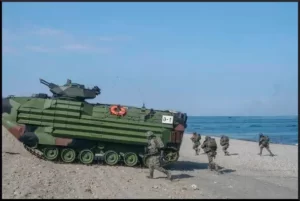
House Foreign Affairs Committee Chairman Michael McCaul (R-TX) similarly told Fox News that Congress would authorize military action against China in the event of an invasion of Taiwan.
A more sensible approach has been supported by Bernie Sanders (D-VT), who in 2021 penned an article in Foreign Affairs titled “Don’t Start Another Cold War,” which lamented the “fast growing consensus in Washington that views the U.S.-Chinese relationship as a zero-sum economic and military struggle.”[6]
We need Sanders and his supporters now to step up and more vocally unmask the China hawks in Congress, and rebuke the Biden administration’s imperialistic policies in Southeast Asia that follow the playbook of some of the worst chapters in modern U.S. history.
- Walden Bello, “The Empire Returns,” The Nation, March 20-27, 2023, 29-33. ↑
- Jeremy Kuzmarov, “Under the Façade of Benevolence: Psy-Wars, Amnesty and Defectors in America’s Asian Wars,” The International History Review, September 2019, file:///Users/jeremykuzmarov/Desktop/psywararticle.pdf. ↑
- Bello, “The Empire Returns,” 33. ↑
- In 1998, the Clinton administration signed a new Visiting Forces Agreement, which provided for the periodic deployment of thousands of U.S. troops to participate in military exercises with their Filipino counterparts. This was followed by what eventually became a permanent deployment of U.S. Special Forces in the southern Philippine island of Basilan as part of President George W. Bush’s War on Terror. ↑
- A.B. Abrams, Power and Primacy: A History of Western Intervention in the Asia-Pacific, rev ed. (New York: Peter Lang, 2023), 86. Americans present in Taiwan (Formosa) in the late 1940s equated the imposition of Guomindang rule with “having put all Formosans [Taiwanese] into slavery.” ↑
- Sanders it should be noted is far from perfect in his analysis of China and promotes CIA disinformation when he rebukes Beijing for allegedly “threatening behavior towards Taiwan,” “the repression taking place in Tibet and Hong Kong,” and the “Chinese government’s atrocious policies toward the Uyghur people.” For a corrective, see A.B Abrams, Atrocity Fabrication and Its Consequences: How Fake News Shapes World Order (Atlanta: Clarity Press, 2023). ↑
